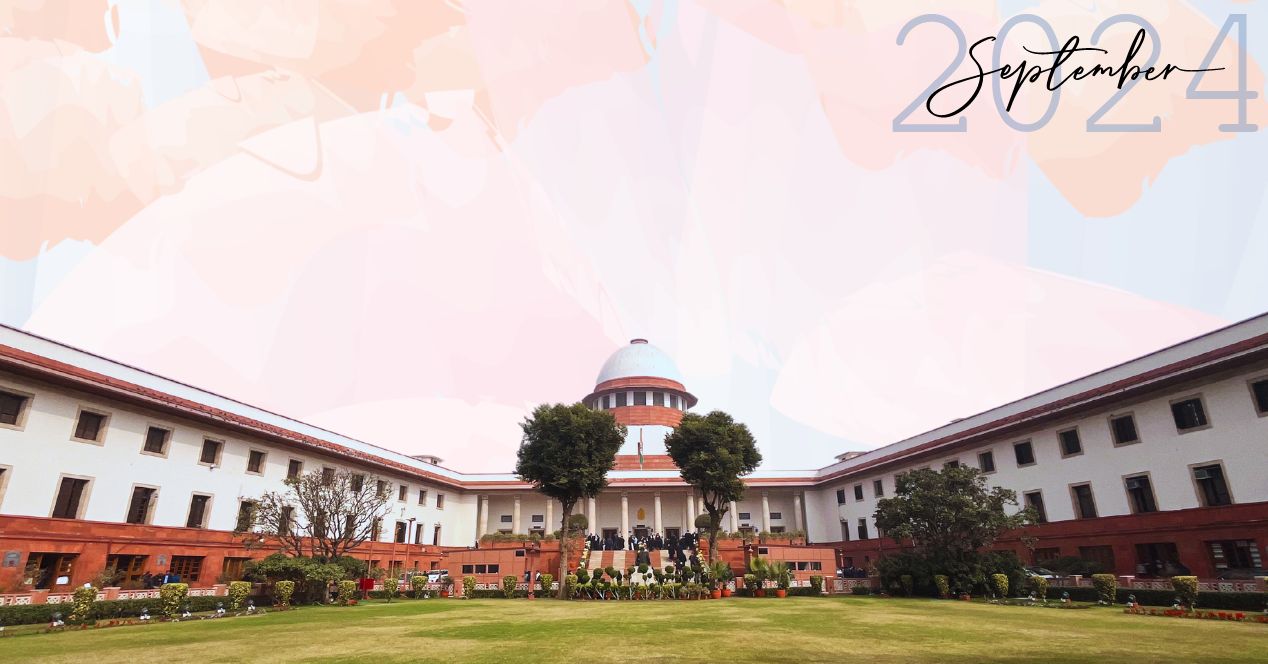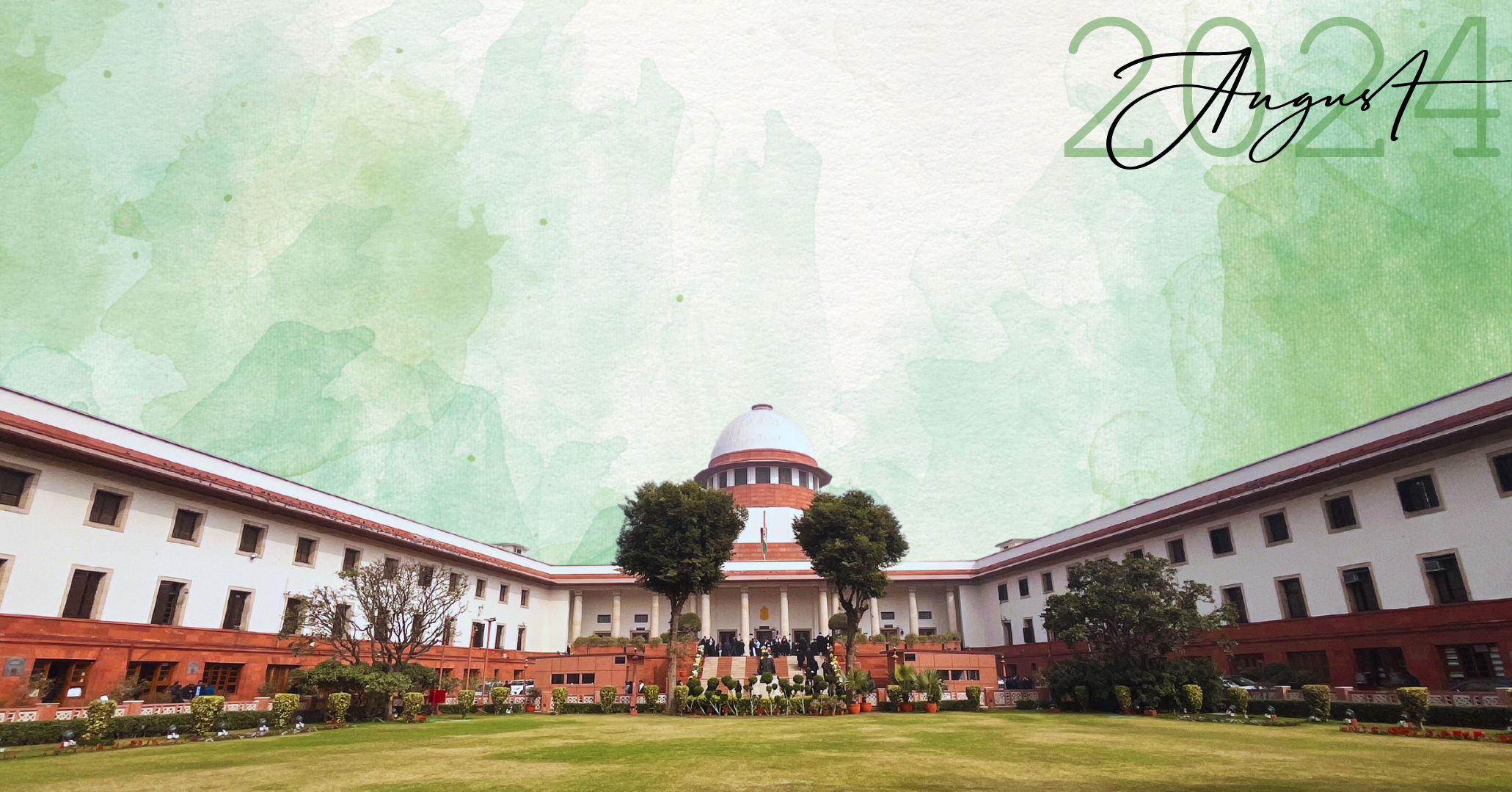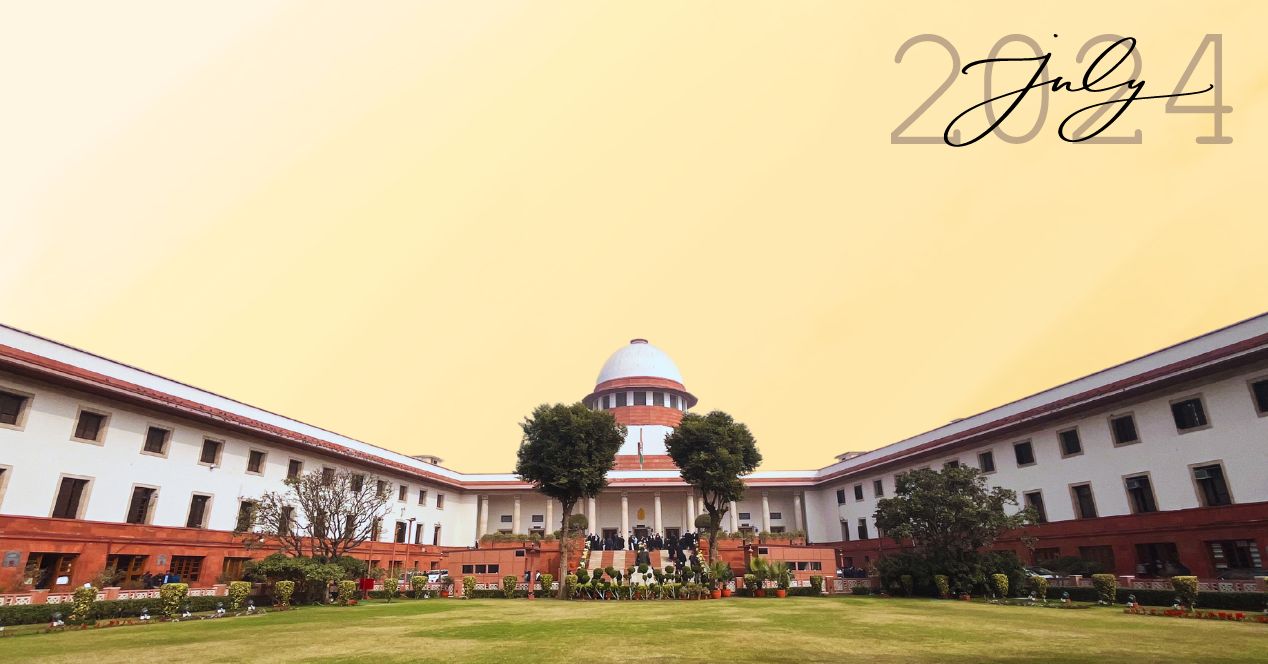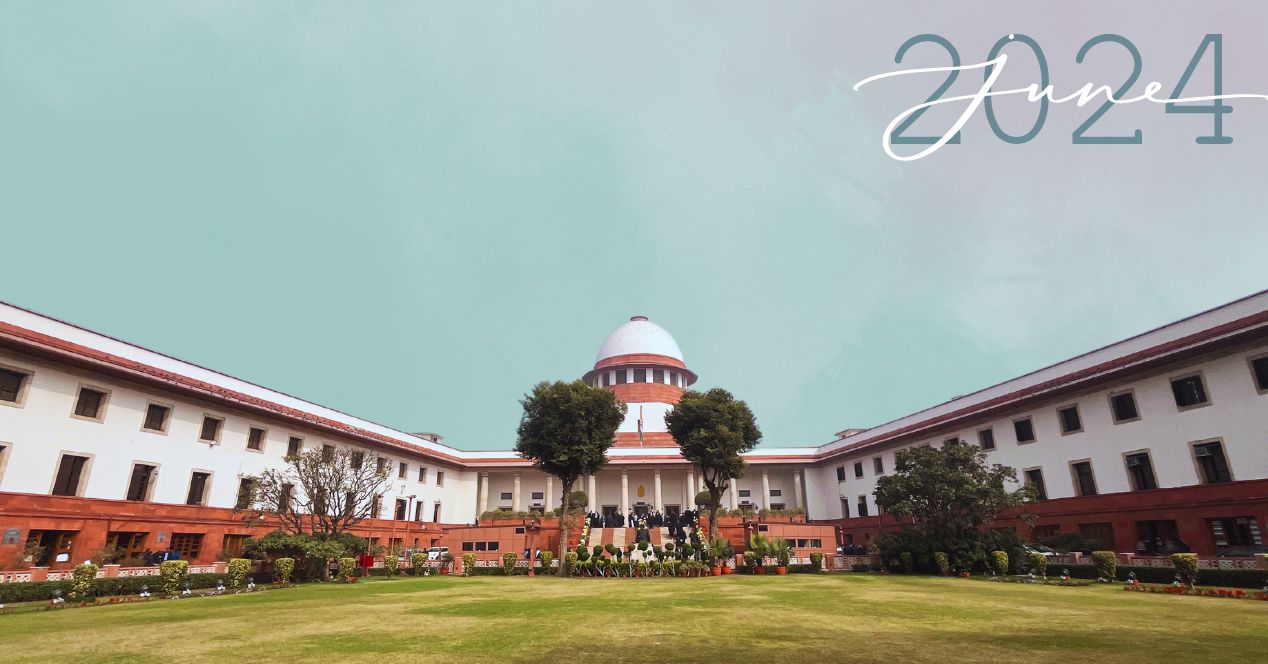Court Data
Pendency reduces by 99 cases in October 2024
The drop in pendency is a welcome trend given there was a rise last year, but questions about data discrepancy still remain unanswered
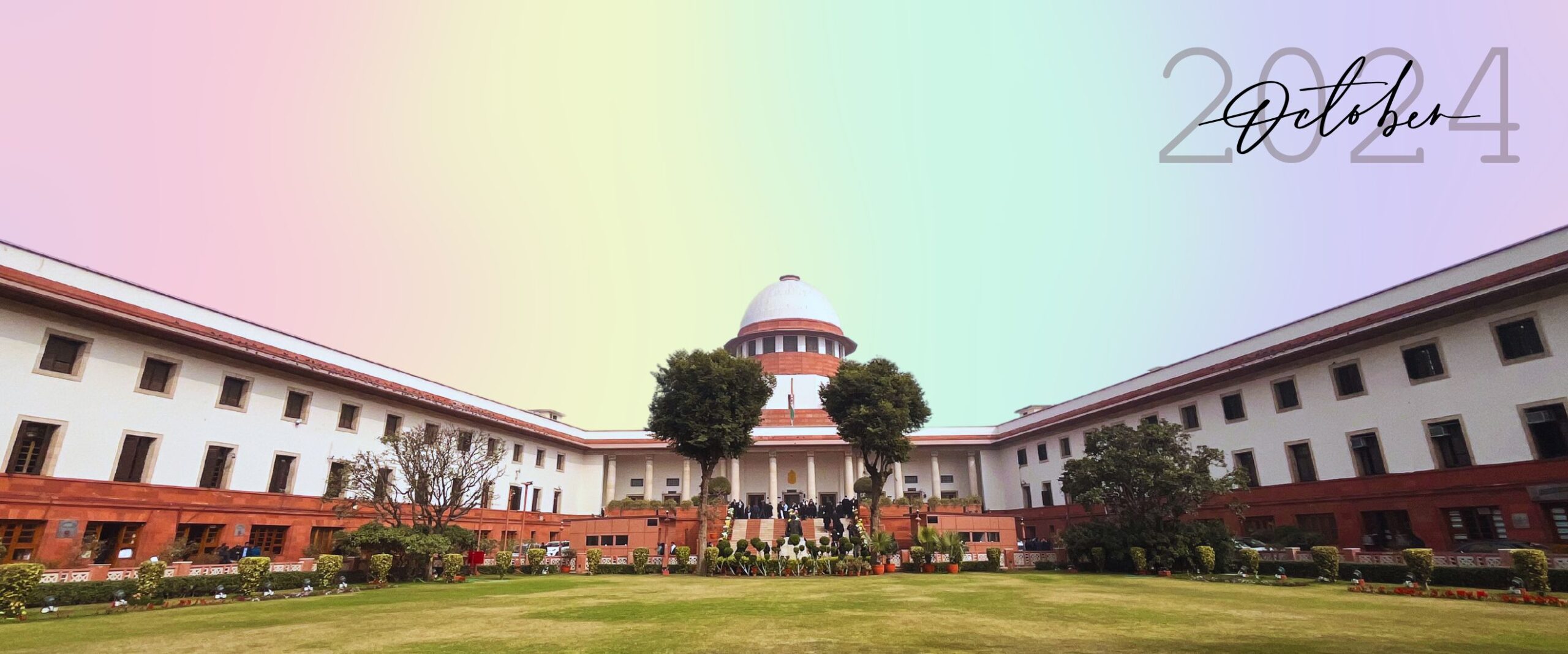
October 2024 closed with 83,001 cases in the Supreme Court marking a net decrease of 99 cases from September 2024. This marginal decline comes after pendency increased by 200 cases in September, after observing a downward trend in July and August 2024.
Figure 1 displays a month-wise breakdown of cases pending before the Supreme Court. Each figure highlights the pendency numbers at the end of each month.
Apart from the spike in June 2024 due to the Court being on vacation, the number of pending cases has remained largely steady throughout 2024. Notably, this marks the fourth time this year that pendency has reduced from the previous month, with the first three times occurring in February, July and August.
It is normal for pendency to decrease in July and August as the Court returns from the summer break. Past trends suggest that the peak in June is a major contributor to the annual increase in overall pendency, as the Court does not return to its pre-June pendency figures for the rest of the year.
Last month, we reported that 2024’s pendency trends appeared to mimic last year’s pattern. However, the drop in October 2024 marks a departure, as pendency increased in October 2023 and continued to rise in November and December 2023.
Figure 2 illustrates the number of Constitution Bench cases pending in the Supreme Court. The donut on the left shows the number of main pending matters whereas the donut on the right shows the tagged matters pending in the Court. Tagged matters are cleared once the main matters are decided.
We anticipated a significant drop in Constitution Bench pendency this year as Chief Justice D.Y. Chandrachud’s retirement neared. Compared to September 2024, five-judge bench pendency has decreased by 14 cases in October 2024, likely due to the Constitution Bench decision upholding the validity of Section 6A of the Citizenship Act, 1955 (Assam Accord judgement).
Pendency in seven-judge bench cases has decreased by one case. Interestingly, no seven-judge bench judgement was delivered in the last month. The Aligarh Muslim University decision is expected before CJI Chandrachud’s retirement on 10 November. So the October reduction cannot be explained by any publicly known rationale.
The nine-judge bench decisions affirming states’ power to regulate industrial alcohol and the states’ authority to tax mines and minerals are now reflected in reduced nine-judge bench pendency. So, ideally, the number of pending cases should have dropped from seven to five. But the number has dropped to three. This is not the first time we have been unable to explain this discrepancy in numbers. The mineral taxation judgement was delivered on 26 July, but the pendency of nine-judge bench cases still showed as seven instead of six. At the time, we surmised that the pending question of the prospective or retrospective application of the decision could explain why the number hadn’t changed in the National Judicial Data Grid.

